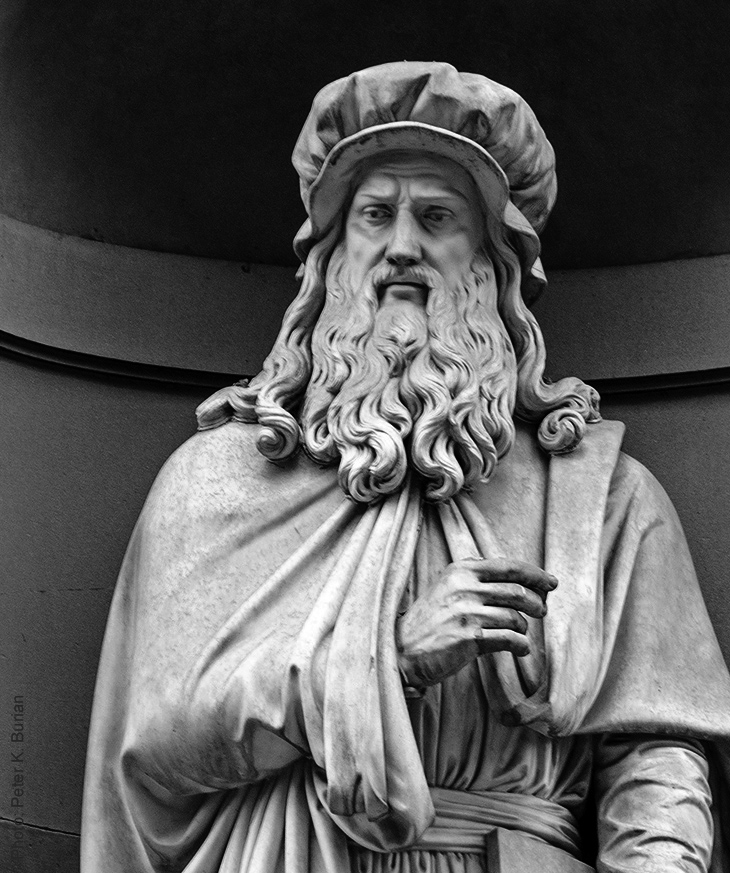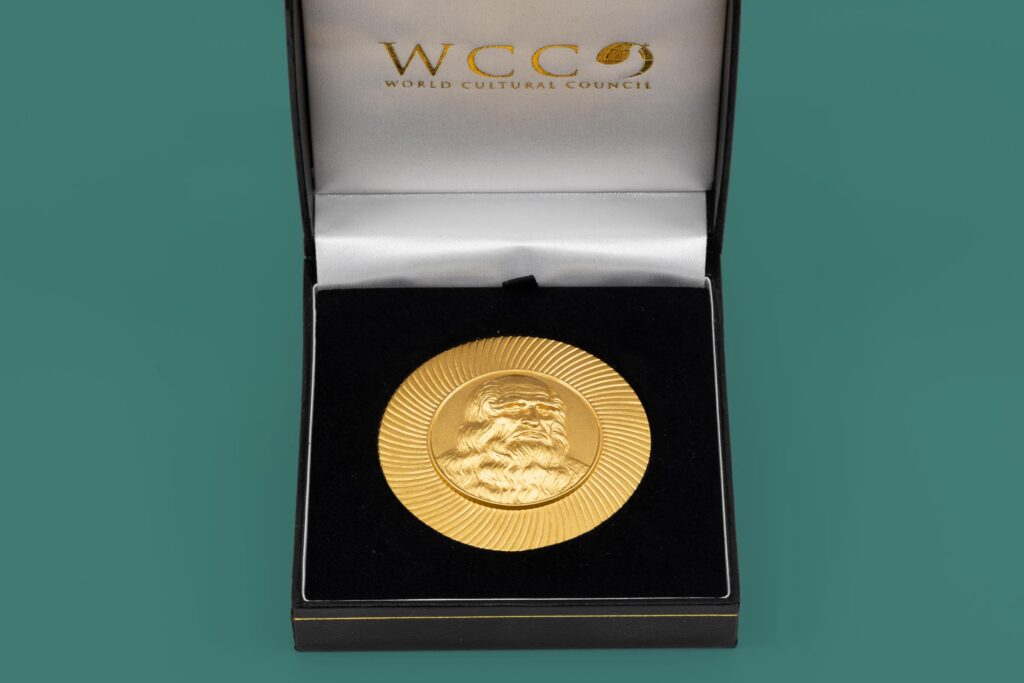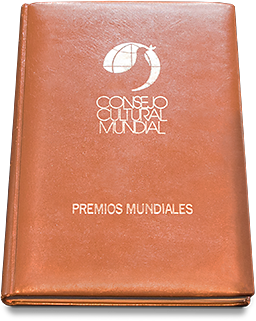The Leonardo da Vinci World Award of Arts
 The Leonardo da Vinci World Award of Arts is an acknowledgment to those who lift our existence to a higher level by the beauty or inspiration of their creative talent.
The Leonardo da Vinci World Award of Arts is an acknowledgment to those who lift our existence to a higher level by the beauty or inspiration of their creative talent.
It is conferred on a renowned artist, sculptor, writer, poet, cinematographer, photographer, architect, musician or other performing, creative or visionary artist, whose work constitutes a significant contribution to the artistic legacy of the world.
The qualifying jury is constituted of internationally renowned artists, authorities, and members of the World Cultural Council.
The prize consists of a diploma, a commemorative medal and an Award Cheque.
Leonardo da Vinci (1452-1519)
A universal man, Leonardo da Vinci possessed a spirit of scientific inquiry and mechanical inventiveness that was centuries ahead of its time. His genius as a painter, draftsman, sculptor, architect and engineer exemplified the Renaissance Humanist ideal.
The unfolding of his genius occurred during the 17 years he spent as painter and engineer for the Duke of Milan. Leonardo’s surviving works consist mainly of a few paintings, as well as a large number of drawings, scientific diagrams, and notes on diverse subjects. His “Last Supper” (1495-1497) and “Mona Lisa” (La Gioconda 1503-1506) are among the most popular and influential paintings of the Renaissance. Also well known are “The Virgin of the Rocks” (1483-1485), “The Virgin and Child with St. Anne” (1499) and his “Self Portrait”.
Despite the fragmentary nature of his surviving achievements, his genius will continue to live as a legacy of knowledge to inspire the imagination of modern man.

World Award of Arts Winners
Winners of the World Cultural Council’s (WCC) World Award of Arts share several notable characteristics:
- Outstanding Artistic Contributions: These individuals have made significant contributions to the arts, often transforming or deeply influencing their field. Their work is recognized for its originality, creativity, and innovation.
- International Recognition: Winners typically have gained international acclaim for their work, influencing the global artistic community.
- Diverse Disciplines: The award embraces a wide range of artistic disciplines, including but not limited to music, painting, sculpture, dance, film, theatre, architecture, and literature. This diversity reflects the WCC’s broad interpretation of the arts.
- Impact on Society: Their work often has a profound impact on society, either by enriching cultural heritage, promoting cultural exchange, or inspiring future generations of artists.
- Long-Term Dedication: Winners usually have a sustained career in the arts, demonstrating long-term dedication and commitment to their discipline.
- Innovation and Influence: They are often pioneers or leaders in their field, known for innovative techniques, unique artistic expressions, or influential styles.
- Education and Mentorship: Many of these artists also contribute to education and mentorship in their field, helping to develop the next generation of artists and expand the reach of their art form.
- Cultural Ambassadorship: Winners often act as cultural ambassadors, representing their art form or country on an international stage, and contributing to global cultural dialogue.
The World Award of Arts not only recognizes artistic excellence but also celebrates artists who have a significant impact on the cultural and artistic landscape on a global scale.



